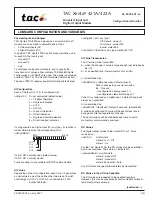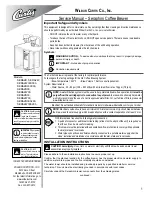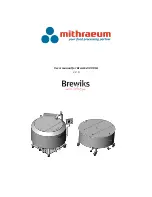
6
?
The burner gas supply piping should branch off from the main line as close to the gas
meter as possible. Do not connect to the bottom of a horizontal section. Use new black pipe
and malleable fittings free of cutting and threading burrs or defects.
?
Provide a sediment trap, union and 1/8" pressure tap in piping close to burner as shown
in Figure 5.
?
Use pipe joint compound approved for use with Liquid Petroleum Gases.
?
Piping must also comply with your local codes.
?
To obtain the maximum firing rate of the burner, the gas supply piping must be sized to
provide a minimum of 7.0"W.C. pressure to the inlet of the upstream automatic safety shut-
off valve when the burner and all other gas utilization equipment are on. The pilot regulator
can be mounted in any position, the main regulator, if equipped, should be mounted upright
and in a horizontal run of pipe.
CAUTION: Because it is difficult to accurately control pressure during supply
pipe leak testing, it is recommended that all low pressure (14.0"W.C. max.)
components, both main and pilot, be disconnected during testing. Exposing low
pressure regulators and valves, including manual valves, to pressures over 1/2 PSIG
(14.0"W.C.) will cause damage and void all warranties.
DANGER: Explosion hazard.
Do not use oxygen for pressure testing.
An explosion could occur during initial start up.
??
If the burner piping must be rearranged because of space limitation, be sure to carry out
the general arrangement shown in Figure 5. Install the combination valve (RE4700BA,
RE4400B & RE4400BA only ) in any position except up-side down.
Part 1
Installation
Continued
Part 1 Installation
RE4400B and RE4400BA
UL, Valve Train Assembly 24VAC
VI
Piping
Continued
Figure 5:
Piping Diagram


































